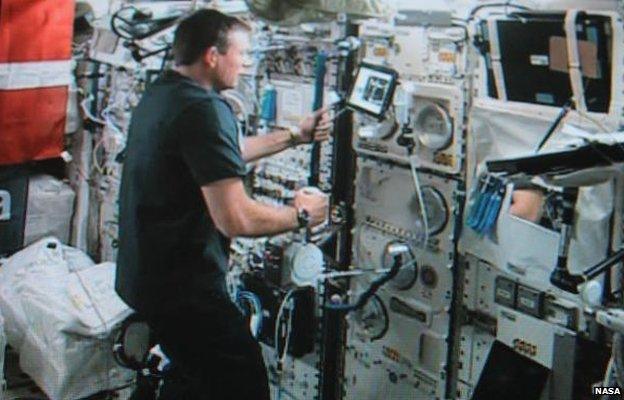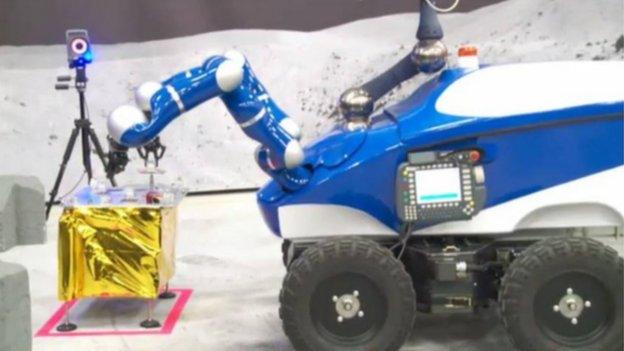Orbital 'peg in the hole' tests works
- Published

The peg was correctly positioned with the aid of a laser - to sub-millimetre accuracy
European astronaut Andreas Mogensen has remotely operated a robot on Earth while flying aboard the International Space Station.
The Dane commanded a rover to drive to an experiment board and, using the vehicle’s robot arm, place a rounded peg into a hole.
Mogensen had a feedback system in his controls that allowed him to "feel" what he was doing 400km below him.
It is the kind of technology astronauts might use one day at Mars.
Building habitats on the surface of the Red Planet, or repairing failed equipment, could require the teleoperation of robots from orbit.
Monday's experiment had to deal with what is expected to be one of the key challenges: latency.
Video signals and other feedback had to pass through a complex communications network involving ISS mission control, ground antennas, and relay satellites. This 90,000km path introduces about a second's delay into proceedings.
Nonetheless, Mogensen managed to get the peg to plug the hole with the aid of a laser guided tool.

Andreas Mogensen controls a robot in the Netherlands from space
The experiment was developed by the European Space Agency’s Telerobotics and Haptics Laboratory in collaboration with the TU Delft Robotics Institute.
The rover was positioned at Esa’s technical centre in Noordwijk, the Netherlands. The current altitude of the ISS is 402km. It is moving around the Earth at roughly 28,000km/h.
Andreas Mogensen is Denmark's first astronaut. He is making a short, eight-day visit to the space station.
Among his other experimental tasks - he will be testing a water purification system that relies on a new nanotechnology membrane, and wearing a new "skin suit" designed to alleviate back problems.

It is the kind of work orbiting astronauts might have to do at Mars